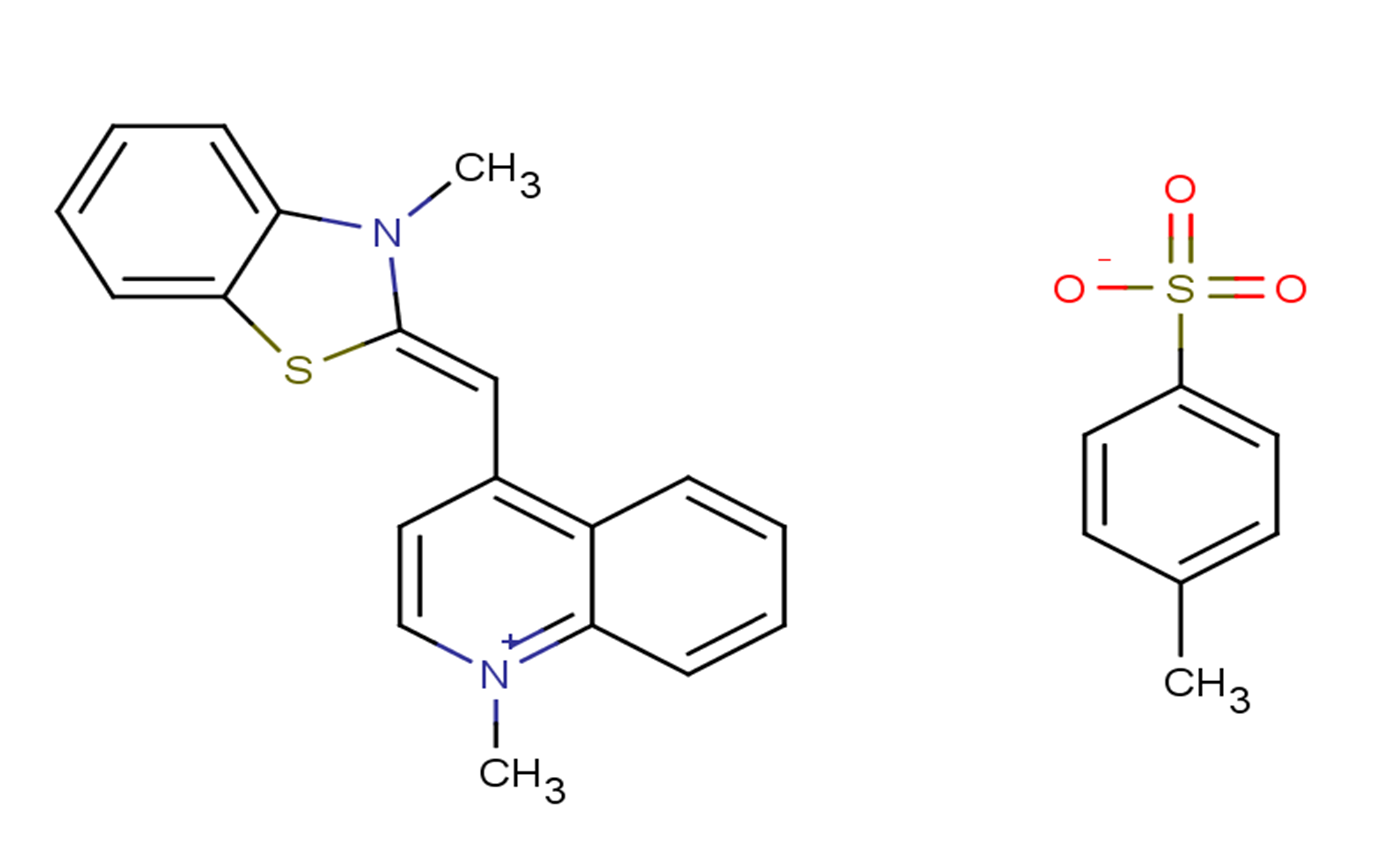
Thiazole Orange
CAS No. 107091-89-4
Thiazole Orange( —— )
Catalog No. M23278 CAS No. 107091-89-4
Thiazole Orange is a dye that can be used for reticulocyte analysis.
Purity : >98% (HPLC)
 COA
COA
 Datasheet
Datasheet
 HNMR
HNMR
 HPLC
HPLC
 MSDS
MSDS
 Handing Instructions
Handing Instructions
| Size | Price / USD | Stock | Quantity |
| 2MG | 49 | In Stock |


|
| 5MG | 59 | In Stock |


|
| 10MG | 88 | In Stock |


|
| 25MG | 160 | In Stock |


|
| 100MG | Get Quote | In Stock |


|
| 200MG | Get Quote | In Stock |


|
| 500MG | Get Quote | In Stock |


|
| 1G | Get Quote | In Stock |


|
Biological Information
-
Product NameThiazole Orange
-
NoteResearch use only, not for human use.
-
Brief DescriptionThiazole Orange is a dye that can be used for reticulocyte analysis.
-
DescriptionThiazole Orange is a dye that can be used for reticulocyte analysis.
-
In Vitro——
-
In Vivo——
-
Synonyms——
-
PathwayOthers
-
TargetOther Targets
-
RecptorOthers
-
Research Area——
-
Indication——
Chemical Information
-
CAS Number107091-89-4
-
Formula Weight476.61
-
Molecular FormulaC26H24N2O3S2
-
Purity>98% (HPLC)
-
SolubilityDMSO:25 mg/mL (52.45 mM; Need ultrasonic);H2O:< 0.1 mg/mL (insoluble)
-
SMILESCN1/C(SC2=CC=CC=C12)=C/C3=C4C=CC=CC4=[N+](C)C=C3.O=S(C5=CC=C(C)C=C5)([O-])=O
-
Chemical Name——
Shipping & Storage Information
-
Storage(-20℃)
-
ShippingWith Ice Pack
-
Stability≥ 2 years
Reference
1.Linda G. Le, et al. Thiazole Orange: A New Dye for Reticulocyte Analysis. cytometry 7:508-517 (1986)
molnova catalog



related products
-
Isocorynoxeine
Isocorynoxeine shows the effects of lowering blood pressure, vasodilatation, and protection against ischemia-induced neuronal damage.
-
BAY-069
BAY-069 is an inhibitor. BAY-069 inhibited branched-chain amino acid transaminase 1 (BCAT1) at IC50:31 nM and branched-chain amino acid transaminase 2 (BCAT2) at IC50:153 nM.
-
Isoguvacine hydrochl...
Isoguvacine hydrochloride is a GABA receptor agonist. Isoguvacine hydrochloride binds to rat synaptic cortical membranes and activates α1β2γ2S, α2β2γ2S, α3β2γ2S, α5β2γ2S, and ρ1 subunit GABAA receptors.



 Cart
Cart
 sales@molnova.com
sales@molnova.com


